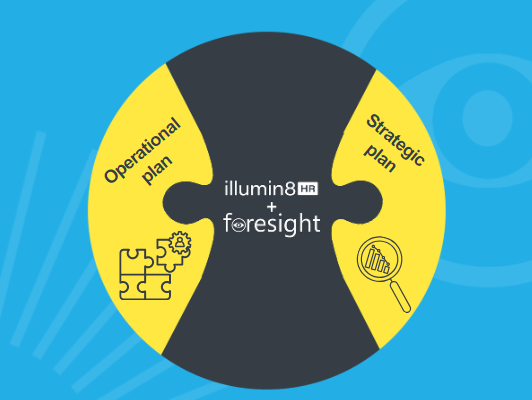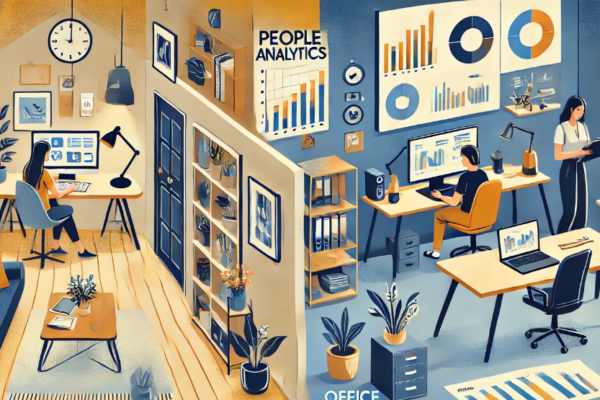People managers are facing more pressures than ever before – managing remote and hybrid teams and playing an active role in employee wellbeing and organisational culture. They are looking to their HR tech suppliers to provide the right tools in order to do this effectively, and one of the most powerful tools is reliable, accessible, actionable insight from data.
We believe that people analytics should be supporting people managers every day. People analytics might be championed by HR but in a data-driven organisation, data is democratised. In the data-driven organisation people managers have direct access to data that helps them take ownership of their teams through people analytics.
How can people analytics help managers to make better decisions about their teams?
Here are eight ways that people analytics can be used by managers as part of business as usual:
1. Productivity
How is a team spending its time? How are team members collaborating and how is their working pattern impacting on productivity of the business unit? Low productivity is estimated to cost US businesses $500 billion per year so taking a regular check on inhibitors to productivity is a place where people managers can quickly spot trends and act upon them using analytics.
2. Recruitment
Recruiting the right skills at the right time and at the right cost is a decision that people managers as well as recruiters should be involved in. Since hiring costs can be 20 to 30% of salary, it’s important that people managers have sight of the skills they will need and when. People analytics provides a comprehensive picture of the skills landscape and can support hiring decisions and strategy.
3. Retention
Retention is a key area where people analytics can flag anomalies and trends without people managers having to look through large volumes of data. Trends in leavers such as tenure, department, performance, seniority and reasons for leaving can be continually analysed, allowing people managers to act quickly where poor retention is damaging the business unit.
4. Career progression
This is a slower burn for people analytics, but technology can provide vital insight into who is getting promoted and where promotion opportunities exist. Over time, data can also map typical career moves and career paths that can feed into development and career planning conversations with line managers.
5. Hybrid workplace
Hybrid work is happening, but it presents a new set of challenges to people managers who need to understand their team dynamics in new ways. People analytics can, at the most basic level, present a picture of the productivity of hybrid teams. At a more advanced level it can be used by managers to understand the extent of collaboration across teams and to delve into whether inequalities are arising due to remote versus in-person working models.
6. Wellbeing
In today’s workplace, managers need to bring focus onto employee wellbeing. Stress-related absence has increased in the last year and work-related stress, depression or anxiety accounts for 44% of work-related ill health and 54% of working days lost which has a direct bearing on productivity and culture. People analytics provides live data on metrics that are indicators of employee wellbeing, including absence.
7. Diversity
How are hiring and promotion decisions impacting workforce diversity? To what extent is the organisation attracting and retaining talent with a diverse range of perspectives and experiences? People analytics collects and collates this data, presenting it so that areas for improvement can be quickly flagged and addressed.
8. Equity, inclusion and belonging
Lastly, a combination of the factors above all contribute to a culture of equity, inclusion and belonging as well as many other influences. People analytics brings together data from a variety of sources and presents them in one place for line managers in an easily understandable way. An overview of team health, productivity, composition and diversity is a valuable guide in building a better culture.
Empower your clients with the right tools
People analytics brings together data from multiple systems such as payroll, recruitment, L&D and HRIS and presents them to a non-technical user without compromising on confidentiality or data protection. Many of the metrics that sit in these disparate systems should be viewed regularly, even daily in order to look at what’s changing, what needs to be flagged.
illumin8HR can be incorporated into your software offering to put data sitting in multiple systems directly in the hands of non-technical users. An integration with illumin8HR as a partner, will enable your clients to get constant feedback from their people data, to collaborate, make actions plans and measure success through people analytics.
To explore Activ8 Intelligence as a partner, get in touch:




